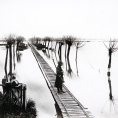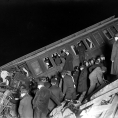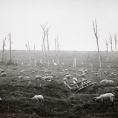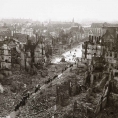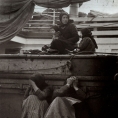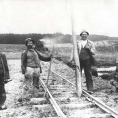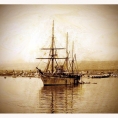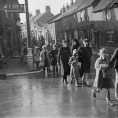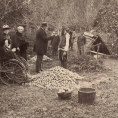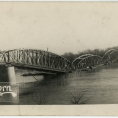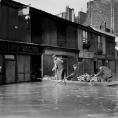Next to portraiture, photojournalism was an important genre of early photography. As soon as the camera was recognized as an efficient means to tell a story or convey a message, its reporting abilities were keenly employed. The press was an immediate and enthusiastic taker of such pictures, even though reproductions on paper initially left much to be desired and didn’t do justice to their original power and character.
Particularly after the invention of the collodion wet plate process in the mid-19th century, extensive photography outside of the studio became possible. While the importance of isolated early examples – such as Carl Stelzners daguerreotype covering the Hamburg fire of 1842, regarded as the very first news photo – is undisputed, pictures produced with the collodion technique managed to gain a dominant position in printed media, running the previous practice of newspaper illustration out of business: photographers could now produce relatively cheap, clear, accurate and multiple prints from a single negative.
Quickly acknowledged as a medium with potentially high emotional impact, the objective qualities of press photos were often used to sway public opinion. Utilized by idealists to attempt to ameliorate deplorable social circumstances, journalistic images have also been ‘hijacked’ by governments, political parties and special-interest groups to create destructive propaganda.
At the same time, providing a window to the world and advocating awareness of social wrongs, disasters, battlefields, individual trauma’s and national catastrophes, photography has opened our eyes to the hardships befalling others. Confronting us with the darkest pages of recent history, the images of the 19th and 20th century’s civil revolutions, World Wars, social turmoil, dramatic crashes and great floods serve as ruthless witnesses to the yesterdays we might like to forget, and as a safety mechanism destined to prevent us from making the same mistakes again.
The superlative of the illustrative journalistic image, is the photo reportage: a visual form of narrative, substituting rather than supporting textual news coverage. The photojournalism magazine was a German invention, dating from the 1920s. It differed from other media in granting photographs a pivotal role, not presenting them as isolated visual elements, but imbedded in a narrative resulting from an active collaboration between editors and photographers. From that time on, photojournalism enjoyed its golden age, giving rise to the first photographic press agencies, with Alfieri – established in London in 1914 – and the Paris-based Roger-Viollet archive (°1938) among the earliest examples.
One of the world’s first photo reporters was Roger Fenton, who set out from London to capture the Crimean war in 1855 at the request of The Times, aiming to provide evidence of military mismanagement and impossible living conditions of the soldiers. Throughout the rest of the 19th and early 20th century, many journalists have turned to photography to document the devastations and social upheavals brought about by wars, revolutions, disasters of nature and injustice.
Next to Europe’s big tragedies, people’s personal misfortunes have not been forgotten by the first generations of reporters. Holger Damgaard, for instance, – Denmarks first employed press photographer – made an everlasting impression with his picture of three poor children in front of a shop for the newspaper Politiken (1908). Images such as Damgaards do speak louder than words, appealing to ethics and values of a universal and timeless nature.

